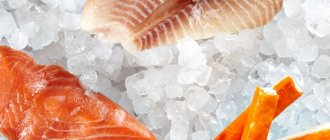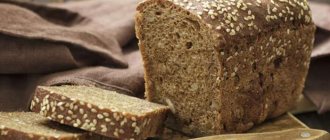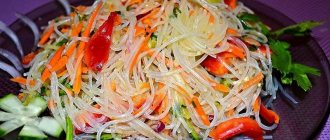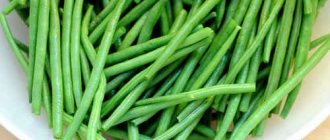Asparagus, also called asparagus, is one of the most useful and elite vegetable crops. An adult plant is a shrub about 1.5 m high and is often used as a decorative element in landscape design. Only young succulent shoots no longer than 20 centimeters are eaten. Some species of this plant are actively used in pharmacy.
CALCULATORS FOR THOSE WHO WANT TO LOSE WEIGHT
Composition (bju)
The beneficial properties of asparagus are determined by its composition. Per one hundred grams of this product in its raw form there are 4.5 g of proteins, about 6 g of carbohydrates and only 0.2 g of fat. It also contains saponins, organic acids, coumarins, a large amount of potassium, carotene, vitamins A, B, C, E, K and many other elements.
With such a complex of useful substances, asparagus has a truly unique set of beneficial properties and has a positive effect on the entire body as a whole. It is not surprising that the scientific minds of Ancient Egypt studied asparagus.
Of the three types of edible asparagus (white, green and purple), the most healthy and rich in vitamins is green.
Contraindications and harm
Contraindications to the use of the product include:
- stomach or duodenal ulcer;
- diseases of the digestive tract;
- diabetes;
- manifestation of sensitivity to certain elements in the product or individual intolerance;
- rheumatism, prostatitis, cystitis.
The latest contraindications are due to the fact that the shoots have diuretic properties, so in these diseases the clinical picture of the disease can be aggravated. The harm is explained by the fact that the product contains saponite, which irritates the mucous membranes of any organs.
One of the negative consequences of eating asparagus is the impact on the human body odor due to the release of sulfur and its compounds through the sweat glands.
Calorie content
Asparagus, along with rhubarb and celery, is the leader in low calorie content. Its indicator for one hundred grams of raw or steamed vegetables is only 20 kcal. The figure for pickled green asparagus is slightly lower - 15 kcal per 100 grams of product.
Asparagus can reach its peak calorie content only when frying it in oil - about 75 kcal per 100 grams of product.
You can often find soy asparagus in markets and stores. This product is not related to asparagus as such and is the result of processing soybeans. The calorie content of this product is about 50 kcal per 100 g. However, soy asparagus in its pure form is less common than in Korean-marinated form. This dish is called fuzhu and it is very high in calories due to the addition of seasonings, butter and sugar - about 200 kcal per 100 g.
Korean soy asparagus for weight loss
Due to the low calorie content of Korean asparagus, it is often used in various weight loss programs and diet courses. Korean asparagus has a pleasant taste, so it should be included in the daily diet not only for those who want to lose weight and follow a strict diet, but also for those who want to diversify their diet.
Important! Nutritionists advise eating this semi-finished product in the afternoon - for lunch or dinner. Thus, healthy vegetable protein will be absorbed in the best possible way and will bring more benefits to the body, and carbohydrates and fats will not be deposited in the body as excess weight and will not cause any harm.
Beneficial features
Each of the elements and vitamins contained in asparagus has a beneficial effect on the body, such as:
- Vitamins A, C, E, K, as well as microelements such as iron, fiber, potassium, selenium and others ensure the proper functioning of the body at the cellular level;
- Coumarins – improve the performance of the heart muscle, prevent the formation of blood clots by improving blood circulation;
- Saponins have a double effect - they clear the bronchi of phlegm in the presence of respiratory diseases and cleanse the body of waste and toxins, as it has a diuretic function;
- Aspartic acid improves metabolism and generally has a positive effect on the functioning of all organs;
- Carotene affects the production of melanin, protects the body from exposure to sunlight and from burns, strengthening and saturating cell membranes;
- Calcium sulfate is an element necessary for the synthesis of collagen and keratin, thus it is directly involved in the creation of structural protein - the basis of any skin and hair cell;
- Vitamin PP and folic acid preserve youth and elasticity of the skin and fight the appearance of wrinkles.
This is a basic, but far from complete list of all the beneficial properties of asparagus. Undoubtedly, consuming this vegetable helps to quickly get rid of excess weight while losing weight without compromising your health, due to the energy value and low calorie content of asparagus.
Application
Juice made from fresh asparagus with green apples and carrots is popular in vegetarian cuisine. To preserve minerals, the plant is best steamed. To prepare asparagus, it is better to use enamel rather than iron utensils, since the tannins contained in the plant react with iron and discolor the sprouts.
Thin stems do not need to be peeled, unlike thick stems, which have a tougher top layer. It is better to cook asparagus whole and cut it into pieces after cooking. As a rule, asparagus is cooked as follows: the stems are tied into a bunch and dipped in salted water, so that the top of the plant remains above the water. Cooking time 3-8 minutes, depending on thickness. Peeled asparagus takes the least amount of time to cook. The base is tougher than the top, and with this preparation the base becomes more tender, and the top does not have time to soften.
Asparagus stalks are fried, stewed, baked, mashed, canned, and added to various dough products and omelettes. Asparagus goes well with any dish - meat, fish or vegetables.
Market Analytics
- Global cosmetics market 2021: an unprecedented test for the global cosmetics industry
- Top 10 Cosmetic Research and Development of 2021
- 2020 in the beauty industry – innovation without borders
Convenient search for beauty salons on our website
Beauty salons in Moscow Beauty salons in St. Petersburg Beauty salons in Ekaterinburg Beauty salons in Novosibirsk
Latest blog posts on our website
- Naturecream / Properties of the “Sunny” oil itself
- Naturecream / “Sugar” wrinkles - or what glycation can do
- Naturecream / Esterified oils
- Naturecream / Arnica - the magical plant of alchemists
- Naturecream / Tremella Extract - Snow Mushroom Detox for Skin
- Prostye-sovety / How to visually enlarge your lips with makeup
- Naturecream / Apricot kernel oil for face
- Naturecream / MATRIXYL3000 - the best skin elasticity stimulator
- Naturecream / SPF in Natural Oils
- Naturecream / Geranium (Pelargonium) oil for skin health and beauty
Latest forum topics on our website
- Natalya / How to properly make a gelatin mask?
- Mrs._Smith / Badly sunburned! What to do?((
- Ice / Is it necessary to combine fitness classes with a diet?
- Antonova / What can be used for hair loss?
- Radio operatorKat / Who was on a protein diet?
Other articles in this section
| Jicama Jicama is a sweet root vegetable of the legume family native to South America. Jicama tubers resemble potatoes, have a brown, dense skin and white, juicy, crisp flesh. Raw jicama tastes similar to pear or apple. It is most often found in Mexico and other Central American countries, where it is also called Mexican potato, Mexican turnip, and Mexican water chestnut. |
| Kupir (chervil) Chervil belongs to the Umbelliferae family and is a relative of parsley. Often used as a culinary seasoning. In French cuisine, it is added to dishes along with thyme, rosemary and basil. The Middle East is considered the birthplace of this plant, but chervil became widespread thanks to the French. The ancient Greeks and Romans prepared a tonic drink from chervil along with dandelion and watercress. |
| Celery (root) Celery is a biennial or perennial plant of the Apiaceae family, a relative of carrots and parsley. Celery root has been used in folk medicine for hundreds of years, dating back to the times of Ancient Greece. Due to its nutritional qualities, the root vegetable perfectly replaces potatoes, which is why it is very popular in the cuisine of European countries. |
| Mitsuna salad The leaves of Mitsuna salad resemble arugula leaves - with the same deeply cut edges. Like arugula, Mitsuna lettuce is a close relative of mustard greens, so it’s a stretch to classify it as a salad. This plant is especially popular in Japan and is rarely found in European countries. In Japan, Mitsuna lettuce has been cultivated since ancient times, but its homeland is believed to be China. The plant tolerates cold well and is suitable for growing in cold regions. |
| Cauliflower Like most cruciferous vegetables, cauliflower is descended from wild kale. Around the 7th century. BC e. it appears in the Mediterranean, in the territory of modern Turkey and Italy. But cauliflower gained particular popularity in medieval France. Cauliflower is similar to broccoli, with a paler color and denser florets. |
| Daikon Daikon is the Japanese name for white radish, which translates to “big root.” The Mediterranean is considered the birthplace of this root crop, and from the 5th century. BC. it began to be grown in China and then in Japan. Now in Japan, daikon is the most popular vegetable. |
| Pickled capers Capers are considered a delicacy and are used as a seasoning in Italian cuisine. These are immature buds of the wild caper plant. It does not like frost and grows in Southern Europe only at above-zero temperatures. It is difficult to grow capers on purpose; they prefer places sheltered from the wind - along walls and hedges. |
| Eggplant The homeland of eggplant is India, where this dark purple vegetable of the nightshade family has been grown for more than four thousand years. Due to its beneficial properties, eggplant is often found in Eastern and European cuisine, especially in vegetarian dishes. |
| Beans Beans are the fruits of various plants of the legume family. These include lentils, soybeans, different types of beans and peas - in total more than 13 thousand plant species. Despite their small size, beans contain many nutrients, especially proteins. Beans are native to the Mediterranean and are a traditional crop in Greece. Due to their nutritional value, legumes are distributed throughout the world. Thus, in China, more than half of all cultivated land is devoted to legumes. |
| Boiled peas Peas belong to the legume family. This unpretentious plant is grown both in warm Asian countries and in Northern European countries. Peas have high nutritional value and are well suited for vegetarian dishes. |
How to select and store
The first thing to remember when choosing a vegetable is that asparagus is young shoots . Any sign of stem germination (opened scales at the tip, the presence of arrows with seeds) is a clear signal that you should refrain from purchasing.
Asparagus is sold in bunches or in containers wrapped in cling film. In the second case, the choice should be treated more carefully, since the packaging features will not allow you to properly examine the product. In this case, the main sign of a stale product will be a large amount of condensation inside the package.
Signs of good asparagus include:
- Rich, even color without any spots or inclusions;
- No foreign odors (the odor of the product itself is neutral);
- Dense round stem;
- Smooth, slightly weathered cut with no signs of drying.
You should not buy asparagus stalks that are too thin - they may be unripe and have a pronounced herbaceous taste. If the cut of the stem shows internal fibrousness, then this is a clear sign of an old product.
Long-term storage of asparagus, like any other vegetable, can lead to the loss of its beneficial properties and deterioration in taste. The optimal storage period is no more than three days.
- You can put the product in the refrigerator with other vegetables and pack it not in a bag, but in a cloth.
- The second method is similar to the techniques used by florists for preserving flower arrangements: the stems need to be recut, then place the bunch in water and put the whole thing in the refrigerator.
Long-term storage of asparagus (for a week) is possible in the freezer, but it will taste less pleasant than fresh shoots.
What are the benefits of soy asparagus?
It is often called the “product of youth”: fuzhu has a high concentration of essential plant protein, which is absorbed by the body much faster and easier than animal protein. Soy asparagus has many health benefits, but some studies show that it can also be harmful if consumed in excess. Eating fuju in a very large amount negatively affects the functioning of the pancreas and thyroid gland, and also harms the digestive processes due to its high fiber and protein content.
This product contains bioactive substances - phytoestrogens. For women, they are of great benefit: consuming soy asparagus during PMS, menopause, or when the reproductive system is unhealthy will help reduce the risk of developing serious diseases and reduce harm from the influence of unfavorable factors. Isoflavones, a type of phytoestrogens contained in fuju, which have many beneficial properties, are excellent antioxidants, normalize hormone function, and promote anti-carcinogenic changes. Soy asparagus contains a special substance, lecithin, whose properties improve liver function and prevent the accumulation of fat in the body.
Recipes
Chicken salad
Salad with chicken fillet and green asparagus. The total calorie content of the dish is 260 kcal.
You will need 100 g of asparagus, 150 g of chicken fillet, several lettuce leaves, low-fat cottage cheese 1 tbsp, 2 tbsp. Greek yogurt, zest of half a lemon, half a teaspoon of salt and sugar.
Asparagus should be cut into pieces about 2 centimeters long and boiled in boiling salted water with added sugar for 3-4 minutes. Also cut the chicken fillet into pieces and fry without adding oil until cooked. In a separate container, mix cottage cheese, yogurt and lemon zest. After the finished asparagus and fillets have cooled, add chopped lettuce leaves and season with sauce.
Warm salad
Warm salad with asparagus and spicy cherry tomatoes. The calorie content of the dish is no more than 70 kcal. Ideal addition to the menu for those losing weight.
You will need: 70 g asparagus, 6 cherry tomatoes, 1 medium onion, 2 cloves of garlic, 3 sprigs of green onions, 1 tbsp. l. olive oil (can be replaced with vegetable oil), 1 egg, ground coriander, salt, pepper, 1 tsp. wine vinegar (if available).
Asparagus stalks are boiled whole in boiling salted water. The egg needs to be soft-boiled or poached. Finely chop all the onions and garlic, cut the tomatoes into 4 parts each and fry in a saucepan with added oil in the following order:
- First, fry regular onions and add a pinch of coriander and pepper to it (you can also add Provençal herbs);
- Once the onion begins to turn slightly golden, add cherry tomatoes and simmer for another minute;
- Add wine vinegar and green onions with garlic and fry for a couple more minutes.
Place the prepared stems on a dish, followed by the dressing with spicy cherry tomatoes and then put in a boiled egg, which needs to be cut so that the yolk drips beautifully.
THESE ARTICLES WILL HELP YOU LOSE WEIGHT
Fresh
Among consumer species, asparagus is distinguished by the color of its shoots - green, white and purple. Each of them is useful in its own way and has a beneficial effect on the body.
Green
Green asparagus shoots are the most common and affordable, due to the relatively simple method of cultivation and collection. These sprouts are the upper part of plants growing above the ground. They have a rich taste and the highest calorie content among all types of asparagus - 24 kcal/100 g, which is due to the content of more sugars. Although this indicator is also minimal for food products.
Also, green shoots are most saturated with beneficial folic acid, which is extremely important for the normal functioning of the body, primarily the liver. This vitamin lifts your mood, energizes you and is especially necessary for pregnant women, as it reduces the risk of miscarriage.
White
White asparagus shoots are grown in the ground without access to sunlight. They are softer in structure and delicate in taste, therefore they are considered a delicacy that in past centuries was available only to aristocrats. In addition, the very labor-intensive process of growing white asparagus helps to increase the final cost of the product.
The calorie content of white asparagus is the lowest compared to other types and is 20 kcal/100 g. Another difference between white shoots and the rest is the presence of skin, which must be removed before cooking. The main benefit of white asparagus for the body is determined by the presence of a special organic compound - allicin. This useful substance helps lower cholesterol levels, has a beneficial effect on the functioning of the heart, and also kills pathogenic bacteria Helicobacter pylori in the stomach, which corrode its mucosa and are considered the main cause of the development of gastritis, ulcers and malignant lesions of the organ.
Important! Allicin has low thermal stability, that is, it breaks down slowly at room temperature, and instantly when heated (cooking). Therefore, it is advisable to consume white asparagus shoots raw without long-term storage.
The main sources of allicin are onions and garlic. It is this substance, along with some sulfur compounds, also present in asparagus, that causes the smell of urine and sweat to change within literally 15–20 minutes after eating even one shoot, which lasts for about a day. If this is significant, then this point should be taken into account.
Violet
Purple asparagus is a rare type of crop that is also grown in the dark, but with short-term access to ultraviolet light. This technology promotes the formation of special beneficial pigments - anthocyanins, which give the sprouts a purple color. True, during heat treatment it changes to green and takes on the same appearance as the classic version of this product. In addition, these sprouts differ from other color varieties in their slight bitterness in taste, which gives the finished dishes some piquancy.
The calorie content of purple asparagus is the average of all types - 22 kcal/100 g. The beneficial anthocyanins it contains have a beneficial effect on health - they prevent diseases of the urinary system, increase memory and concentration, reduce stress levels and eliminate irritability. Studies have shown that people who regularly consume the purple vegetable have a reduced risk of cancer.
In general, if we talk about taste characteristics, the most common green shoots are no different from the delicious white and rare purple ones. Also, regardless of color, all types of asparagus are powerful antioxidants, have pronounced anti-cancer properties and a number of other beneficial effects:
- reduce blood pressure;
- strengthen contractions and normalize heart rhythm;
- produce a blood purifying and diuretic effect;
- make up for the lack of protein in a vegetarian diet;
- accelerate the process of losing weight due to low calorie content;
- make the diet more complete and balanced;
- saturate the body with valuable substances;
- relieve nervous tension and increase stress resistance.
During the Renaissance, the plant was considered a powerful aphrodisiac, and therefore was prohibited for use by church ministers in order to avoid igniting the “fire of passion.”
The nutritional value of asparagus stems is considered almost optimal. With minimal calorie content, asparagus contains a wide range of various beneficial substances. Although it should be borne in mind that these indicators vary depending on storage conditions and the method of preparation or use of the product.
When included in the diet, young crispy shoots help get rid of excess weight much faster and more comfortable for the body, providing it with the necessary beneficial elements, accelerating the burning of fat deposits, activating metabolism, and providing a tonic effect. Thanks to its diuretic effect, this product helps eliminate excess fluid, waste and toxins.
Contrary to popular belief, the thickness of the shoots does not affect the quality, composition or calorie content of asparagus. All these characteristics directly depend only on their age and freshness. When purchasing such a product, you need to choose elastic stems of even color with small dense tops. The cut areas should not be dried out, the surface should not be wilted, and the tops should not even begin to bloom.
It should be remembered that freshly cut asparagus stems cannot be stored for long periods of time, as they quickly lose their taste and beneficial qualities. They need to be treated like fresh flowers - put in water and periodically change it, updating the cut. This “bouquet” is covered with film and stored in the refrigerator.
You can also purchase frozen shoots, which are available in almost any supermarket, or freeze them yourself. The calorie content of asparagus after freezing remains the same as fresh, and the loss of vitamins and other valuable elements does not exceed 15–20%, which, given the very rich composition of the plant, will not be too noticeable.
The nutritional value
The chemical composition, nutritional value and calorie content of asparagus sprouts and the semi-finished soy product of the same name are completely different and cannot be compared. But each of these products is highly valued in dietary nutrition for the many beneficial properties that are provided by the vitamins, minerals and macronutrients present in them.
Proteins fats carbohydrates
According to the information base of the US Department of Agriculture, 100 g of asparagus stalks with a calorie content of 20 kcal contain the following amount of BJU:
- proteins - 2.2 g;
- fat - 0.12 g;
- carbohydrates - 3.88 g (including 2.1 g fiber and 1.88 g sugars).
Boiled asparagus sprouts differ slightly in calorie content - it increases to 22.2 kcal/100 g with a corresponding change in the ratio of BJU in this amount of product:
- proteins - 2.38 g;
- fats - 0.21 g, including polyunsaturated fats - 0.1 g;
- carbohydrates - 4.2 g (including 2 g dietary fiber and 1.3 g saccharides).
After marinating, the calorie content of asparagus decreases (up to 15 kcal/100 g) and, accordingly, the amount of BZHU. 100 g of pickled asparagus shoots contains:
- proteins - 1.8 g;
- fat - 0.18 g (0.04 g saturated fatty acids):
- carbohydrates - 1.47 g (dietary fiber - 1 g, saccharides - 0.3 g).
The calorie content of asparagus from soy is 15 times higher than that of asparagus and averages 387 kcal per 100 g, which contains the following amount of BJU:
- proteins - 41.9 g;
- fat - 19.2 g;
- carbohydrates - 11.9 g.
The benefit of this product is due to the fact that the energy value increases mainly due to the increased protein content - in soybean concentrate there are almost 20 times more of them than in asparagus stalks, while the number of carbohydrates is 10 times less.
Macro- and microelements
Asparagus is a rich source of minerals. The sprouts contain an increased amount of many valuable elements, providing them with a number of beneficial properties:
- iron is an indispensable participant in the processes of supplying oxygen to cells, maintains a normal level of hemoglobin in the blood, and prevents the development of anemia;
- phosphorus - ensures the vital activity of every cell and takes part in all vital processes in the body, especially important for bone tissue and teeth;
- Potassium is an important electrolyte that conducts electrical charges in the body, maintains acidity balance in the body, helps deliver nutrients to cells, cleanse waste and remove toxins;
- sodium – maintains the water-salt balance in cells, normalizes neuromuscular activity and kidney function, ensures the preservation of minerals in the blood in a dissolved state;
- magnesium - calms the central and peripheral nervous system, regulates balance in nervous and muscle tissue, ensures “internal calm” of the body;
- calcium is the main element of bone tissue, which ensures its strength, as well as a participant in the processes of excitation and inhibition in the brain and maintaining their balance.
Semi-finished soybean products have almost the same set of macro- and microelements. This shows some similarities between both products.
However, asparagus has some advantages. Along with Jerusalem artichoke and chicory, it contains an increased amount of inulin, a unique carbohydrate that is a natural prebiotic and, unlike many other carbohydrates, is not broken down in the gastrointestinal tract. Moving through the intestines, it reaches the colon undigested, where it becomes food for beneficial bacteria - bifidobacteria and lactobacilli. These microorganisms promote better absorption of nutrients and prevent the development of allergies and colon cancer.
Also, both asparagus are rich in dietary fiber, which normalizes digestive processes and ensures optimal speed of food movement through the gastrointestinal tract. Foods containing a lot of fat slow down digestion, while carbohydrate foods, on the contrary, speed it up. To maintain balance, you need to consume up to 50 g of fiber daily, the source of which can be either asparagus or soy concentrate.
Vitamins
The basis of the vitamin composition of asparagus stems is vitamins C, groups B, E and A, as well as beta-carotene. Their beneficial effects are as follows:
- C – ensures the normal functioning of the immune system, maintains healthy connective and bone tissue, participates in protein metabolism and redox processes;
- Group B - contribute to the proper functioning of cellular metabolism, ensure the health of the nervous system, and maintain the balance of the emotional and mental state;
- PP - regulates the activity of the higher nervous system, improves digestion processes, protects the cardiovascular system, promotes vasodilation and prevents the formation of blood clots;
- E is a strong antioxidant, neutralizes free radicals, actively protects cell membranes from damage;
- beta-carotene is a precursor of vitamin A, is a powerful antioxidant and adaptogen, and has a pronounced immunostimulating effect;
- A − accelerates the process of skin renewal, promotes rapid healing and restoration of damaged tissue, and has a beneficial effect on vision and eye health in general.
The chemical composition of the soybean product includes the same vitamins, but in a slightly different quantitative ratio, which does not significantly affect the beneficial properties.
Asparagus is valued for its highest folic acid content among vegetables and fruits, which makes it an indispensable component of a healthy diet, especially for women during pregnancy. This substance is called by some scientists the “good mood vitamin” because it promotes the production of “happiness” hormones. In addition, folic acid contributes to the supply of carbon necessary for hemoglobin synthesis, has a positive effect on cell development, restoration of all tissues, and the functioning of the immune and cardiovascular systems.
Despite the various beneficial properties and optimal caloric content of asparagus and soy concentrate of the same name, both products should be consumed in reasonable quantities. Their harm can occur due to excessive hobby or the presence of individual intolerance and other contraindications.
Directions
Roasted asparagus
IngredientsDirections
Table 1
| Products | Weight | Squirrels | Fats | Carbohydrates |
| Asparagus | 450 gr | 8.55 | 0.45 | 13.95 |
| Olive oil | 20 gr | 0 | 19.96 | 0 |
| Salt | 5 g | 0 | 0 | 0 |
| Black pepper | 2 g | 0.21 | 0.07 | 0.77 |
| Exit | 440 | 8.76 | 20.48 | 14.72 |
Pickled
In addition to fresh and frozen, pickled asparagus, which is sold in small glass jars, is no less popular and accessible. This product is widely used as an independent dish or as a healthy addition to a variety of salads and snacks. In addition, the calorie content of asparagus after marinating in industrial conditions is slightly reduced and amounts to only 15 kcal/100 g, which makes it an ideal component of any dietary program. In this case, it is recommended to add pickled asparagus shoots to almost all first and second low-calorie dishes, which will make them tastier, add a touch of piquancy and not only not increase, but even reduce the overall calorie content.
The benefits of pickled asparagus sprouts are explained by their own beneficial properties, which are lost by only 15–20% during heat treatment, as well as by the addition of some other components, in particular spices and vinegar. The various beneficial effects of spicy additives on the human body are well known. And vinegar, as a result of bacterial fermentation, saturates the marinade and the asparagus sprouts in it with beneficial bacteria and enzymes, which improve the intestinal microflora and activate the digestive processes. In addition, indications for the use of pickled shoots of this plant are heart disease and vascular problems, and due to its low calorie content, it is recommended for obesity to accelerate fat breakdown.
At the same time, pickled asparagus has a very irritating effect on the gastric mucosa, therefore it is contraindicated for consumption in the presence of acute gastrointestinal diseases. In addition, it should be borne in mind that the product can be harmful if you are intolerant to the substances present in it, including not only the asparagus itself, but also spices or vinegar.
Micro- and macroelements in Asparagus
Asparagus contains the following elements: Mono- and disaccharides, SFA - Saturated fatty acids, MUFA - Monounsaturated fatty acids, PUFA - Polyunsaturated fatty acids, Sodium, Potassium.
| Mono- and disaccharides, g. | 1,88 |
| SFA – Saturated fatty acids, g. | 0,046 |
| MUFA - Monounsaturated fatty acids, g. | 0,006 |
| PUFA - Polyunsaturated fatty acids, g. | 0,088 |
| Sodium, mg | 2 |
| Potassium, mg | 202 |
Calorie content and chemical composition of other products
| Product | Kcal | Proteins, g | Fats, g | Angle, g | |
| Asparagus | 20 | 2,2 | 0,12 | 3,88 | |
| Cooked Asparagus (Fresh) | 39 | 2,33 | 2,21 | 4,03 | |
| Asparagus (Canned, without Syrup) | 19 | 2,14 | 0,65 | 2,46 | |
| Asparagus (Fresh, Frozen) | 24 | 3,23 | 0,23 | 4,1 | |
| Soy asparagus | 440 | 45 | 20 | 20 | |
| Asparagus, boiled | 22 | 2,4 | 0,22 | 2,11 | |
| Asparagus, boiled, with salt | 22 | 2,4 | 0,22 | 2,11 | |
| Asparagus, frozen, boiled, no salt | 18 | 2,95 | 0,42 | 0,32 | |
| Asparagus, frozen, boiled, with salt | 18 | 2,95 | 0,42 | 0,32 | |
| Asparagus, frozen, uncooked | 24 | 3,23 | 0,23 | 2,2 | |
| Asparagus, canned, no salt added | 15 | 1,8 | 0,18 | 1,48 | |
| Asparagus, canned, standard packaging | 15 | 1,8 | 0,18 | 1,47 | |
| Asparagus, canned, dry product without marinade | 19 | 2,14 | 0,65 | 0,86 | |
| Asparagus, raw | 20 | 2,2 | 0,12 | 3,88 | |
| Green beans, boiled, without salt | 47 | 2,53 | 0,1 | 9,18 | |
| Green beans, boiled, with salt | 47 | 2,53 | 0,1 | 9,17 | |
| Green beans, raw | 47 | 2,8 | 0,4 | 8,35 | |
| Asparagus salad, raw | 18 | 0,85 | 0,3 | 3,65 |











